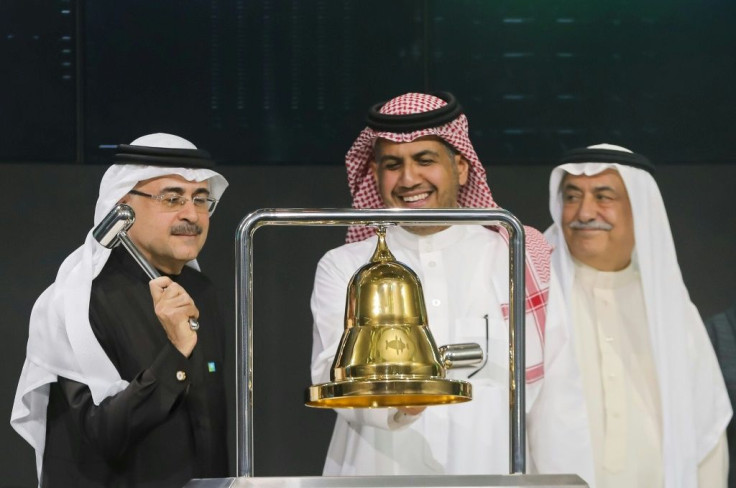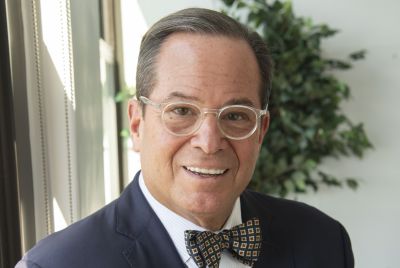Is Aramco Overpriced? Stock Hits $2 Trillion Market Cap, But Will Pay Underwriters A Pittance

Saudi Aramco, which soared on the local stock exchange on its second day of trading on Thursday, will only pay a total of $64 million to foreign banks that helped arrange its record initial public offering.
Bloomberg reported foreign banks will each receive 13 million riyals ($3.5 million) while banks based in the Persian Gulf region will get 39 million riyals ($10.4 million) each.
Given that Aramco raised a historic $25.6 billion in the IPO, the total fee paid to foreign banks comes out to only 0.25%. Bloomberg noted global banks earned an average fee of 4.1% this year on large IPOs, up from 3.6% in 2018.
As a result, the foreign underwriters will barely earn enough on the deal to cover their costs.
In stark contrast, when Chinese internet colossus Alibaba Group Holding (BABA) raised $25 billion in its IPO in late 2014, it shelled out about $300 million to its underwriters.
But Aramco’s dependence on Wall Street bankers dissipated when it decided to offer shares primarily to investors in the Persian Gulf after some western critics balked at its high valuation. The kingdom canceled road shows that were to be held in London and New York.
The Aramco IPO was headed by nine joint global coordinators: Bank of America (BAC), Citigroup (C), Credit Suisse (CS), Goldman Sachs (GS), HSBC (HSBC), JPMorgan (JPM), Morgan Stanley (MS), National Commercial Bank of Saudi Arabia and Samba Financial Group of Saudi Arabia.
A report in Forbes suggested Aramco’s $1.7 trillion IPO was inflated.
“Saudi honchos are bent on sucking in a new generation of uninformed regional investors,” Forbes wrote. “Their underwriting price is too high for informed western world players and underwriters.”
At any rate, by reaching a $2 trillion market cap on just its second day of trading, Aramco has reached the target originally envisioned by Mohammad bin Salman al Saud, the de facto boss of the corporation.
But analysts at Sanford C. Bernstein & Co. have already urged Aramco shareholders to cash out now, saying the stock is grossly overvalued.
Bernstein analysts including Neil Beveridge and Oswald Clint said Thursday the $1.88 trillion market cap that Aramco reached at the end of Wednesday was about 28% above its fair value. The analysts cited such concerns as low dividend yield, the political risks inherent in a company run by a government and a gloomy outlook for crude oil prices.
Oil priced at $100 a barrel, Bernstein commented, would justify the company’s current valuation – but Brent crude was trading at about $64 on Thursday.
Bernstein added, however, Aramco may have some short-term upside as the stock will be added to some emerging markets indexes and because it’s quite difficult to short stocks on the Saudi Tadawul Stock Exchange.
Bernstein initiated coverage of Aramco with an “underperform” rating (essentially a “sell” recommendation) and established a target price of 25.50 riyals ($6.80), well below the 35.20 riyal ($9.39) closing price on its first day of trading.
“For investors who have benefited so far, we would take profit here,” Bernstein said. “For those who have not, we would wait until a better entry point, which will inevitably come.”
Questions have also been raised about governance and transparency.
“How do we invest in a company that is 98% owned by the Saudi government, where the Saudi royal family calls all the shots? It does not matter what independent investors or independent board members think, frankly,” Pavel Molchanov, an energy analyst at investment bank Raymond James told CNBC on Thursday. “It is a very unique, very special situation. Quite a polarizing stock, frankly. Some people love it, and some people will never own it.”
Aramco also carries with it some geopolitical risks, including chronic Middle East instability.
John Driscoll, chief strategist at JTD Energy Services, referred to the September drone attacks which shut down 50% of Saudi oil production (and widely blamed on Iran).
“Although the Saudis did recover, that becomes a concern. And then just general Mideast geopolitics and the potential for upheavals and dislocations, that gets factored in,” he said.
© Copyright IBTimes 2024. All rights reserved.





















